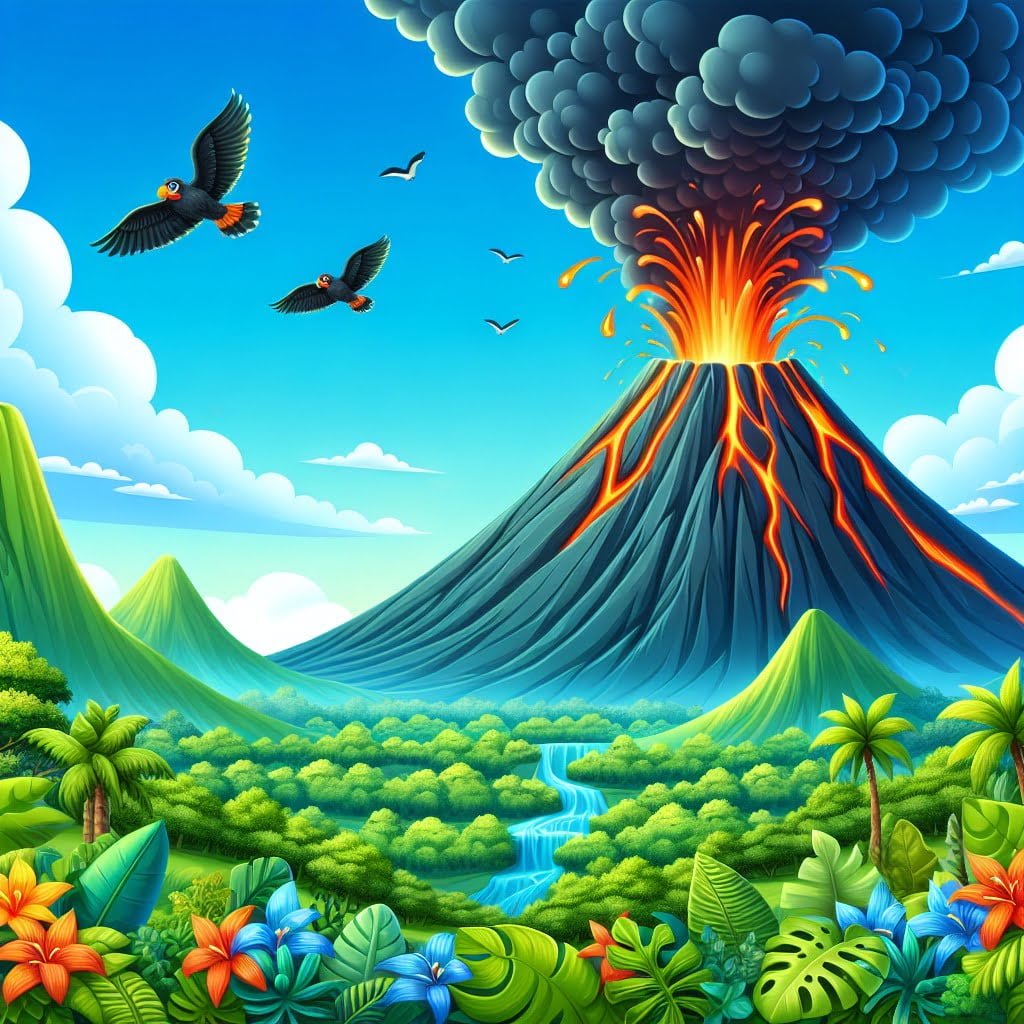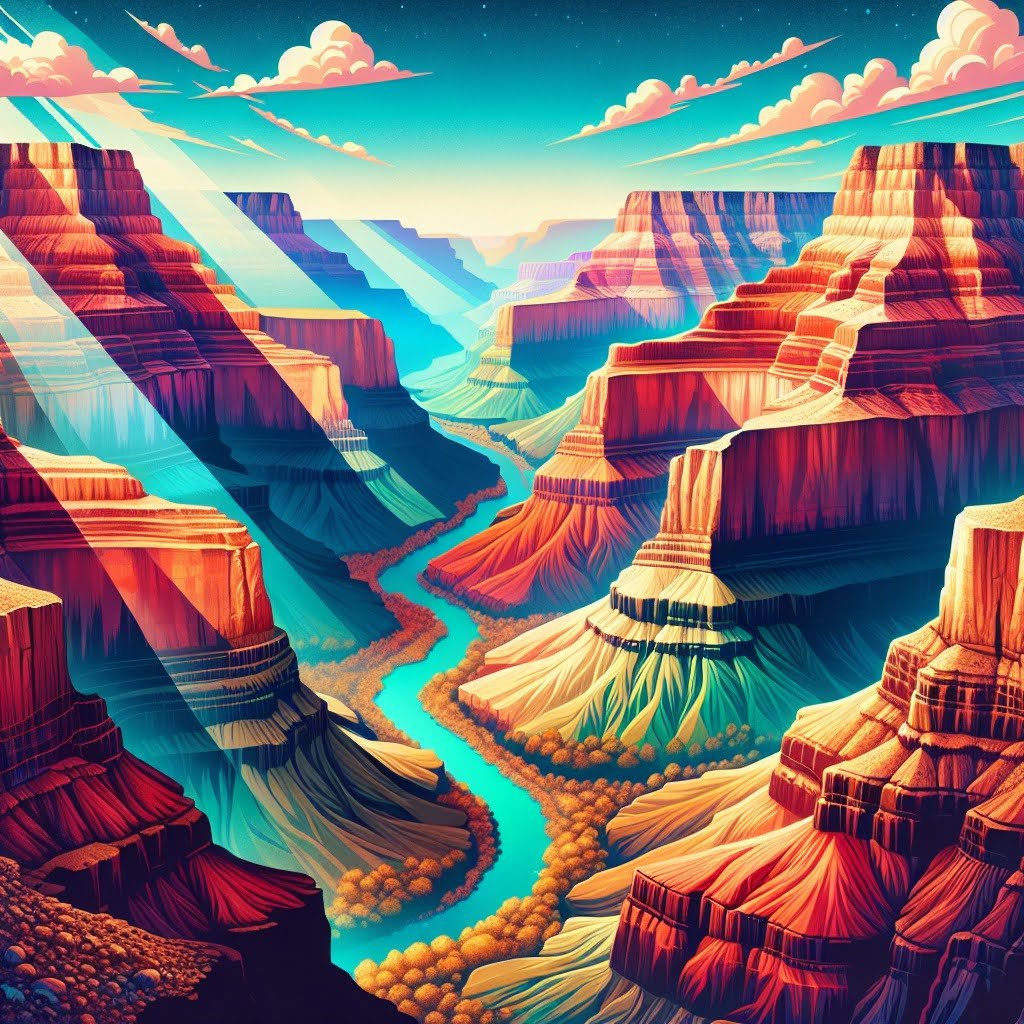Welcome to a world of wonder and discovery with National Parks Facts For Kids! As an expert in the realm of educational and engaging content for young minds, I am thrilled to introduce you to the fascinating world of National Parks. From the iconic Yellowstone, America’s first National Park, to the fiery geology of Hawaii Volcanoes, each park offers a unique blend of history, geology, and wildlife waiting to be explored. Join me on a journey through these natural wonders as we uncover fun facts that will ignite your child’s curiosity and foster a deeper appreciation for the environment. Let’s embark on an exciting adventure together, delving into the rich tapestry of National Parks and inspiring the next generation of park enthusiasts. Get ready to be amazed, entertained, and educated as we unravel the secrets of these magnificent landscapes. Welcome to National Parks Facts For Kids – where learning meets adventure!
National Parks Facts For Kids
1. America’s First National Park
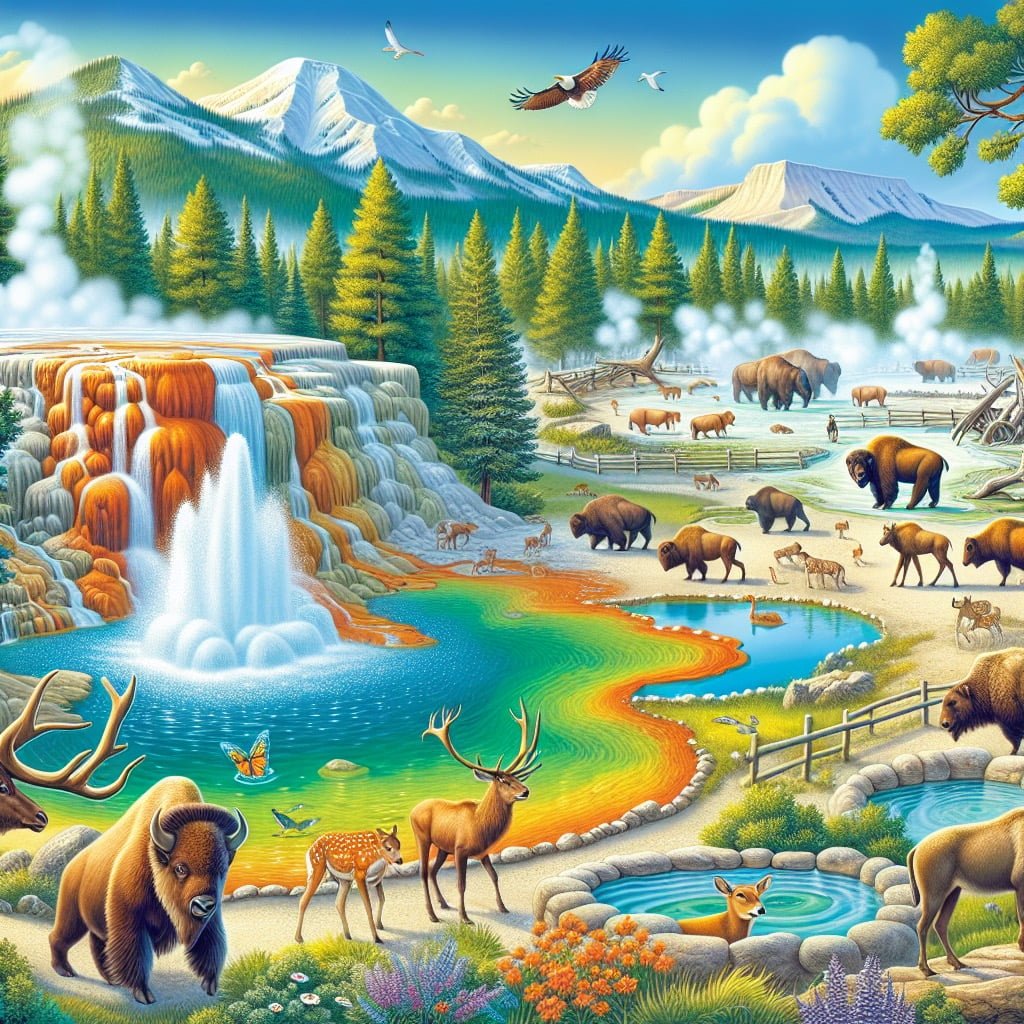
For younger kids: Yellowstone was the first national park in America!
For older kids: Yellowstone National Park, established in 1872, was the first national park not only in the United States but in the world. It’s home to an incredible variety of wildlife and natural wonders, including the famous Old Faithful geyser.
Detailed explanation:America’s first National Park, Yellowstone National Park, holds a special place in the hearts of nature enthusiasts and conservationists alike. Established in 1872, Yellowstone is not only the first National Park in the United States, but also the first in the world. Its vast expanse covers over 2 million acres of land, spanning three states: Wyoming, Montana, and Idaho.
One of the most striking features of Yellowstone National Park is its geothermal wonders. The park is home to over half of the world’s geysers, including the famous Old Faithful. These geothermal features are a result of the park’s location atop a supervolcano, which provides the heat necessary for these natural spectacles.
In addition to its geothermal features, Yellowstone is also home to a diverse array of wildlife, including bison, elk, grizzly bears, and wolves. The park’s varied ecosystems, from high alpine meadows to dense forests, provide habitat for a wide range of species.
Visitors to Yellowstone can explore the park’s natural wonders through a variety of activities, including hiking, camping, and wildlife watching. The park also offers educational programs and guided tours, making it an ideal destination for families looking to learn more about the natural world.
In conclusion, Yellowstone National Park stands as a testament to the beauty and diversity of America’s natural landscapes. As the first National Park in the country, it has set the standard for conservation efforts and the preservation of our natural heritage. National Parks Facts For Kids, Yellowstone National Park is a shining example of the importance of protecting these valuable resources for future generations to enjoy.
National Parks Facts For Kids
2. The Grand Canyon’s Layers
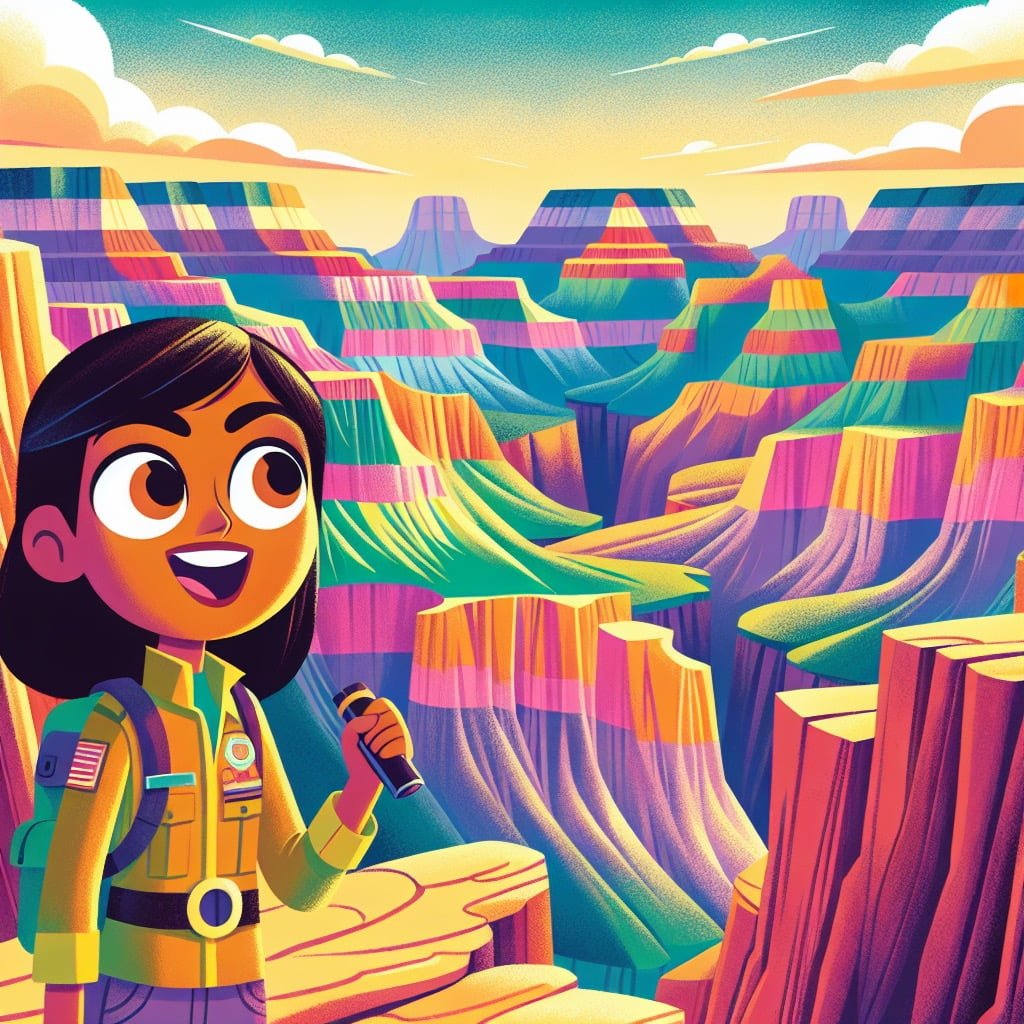
For younger kids: The Grand Canyon has lots of different colorful layers!
For older kids: The Grand Canyon’s layers of rock represent millions of years of Earth’s history, offering a unique view of the planet’s geological past and the forces that shaped it over time.
Detailed explanation:One of the most fascinating aspects of the Grand Canyon, a spectacular natural wonder located in Arizona, is its layers. The Grand Canyon is like a giant book that tells the geological history of the Earth, with each layer representing a different chapter in the planet’s story.
The rocks and sediment that make up the layers of the Grand Canyon were formed over millions of years through a combination of erosion, volcanic activity, and tectonic forces. The canyon’s layers range in age from about 250 million years old at the bottom to around 1.2 billion years old at the top, providing a rare glimpse into the Earth’s distant past.
Each layer in the Grand Canyon has a unique color, texture, and composition, reflecting the environmental conditions that existed when it was formed. Some layers, such as the Coconino Sandstone and the Kaibab Limestone, were deposited in ancient oceans, while others, like the Vishnu Schist, were once part of towering mountain ranges.
Exploring the Grand Canyon’s layers is like taking a journey through time, with each layer offering clues about the Earth’s ever-changing landscape. The canyon’s geological richness has made it a popular destination for both scientists and tourists, attracting over six million visitors each year. It is no wonder that the Grand Canyon is one of the most beloved National Parks Facts For Kids in the United States, as it provides a hands-on lesson in geology and natural history that is both educational and awe-inspiring.
National Parks Facts For Kids
3. Mount Rushmore’s Presidents
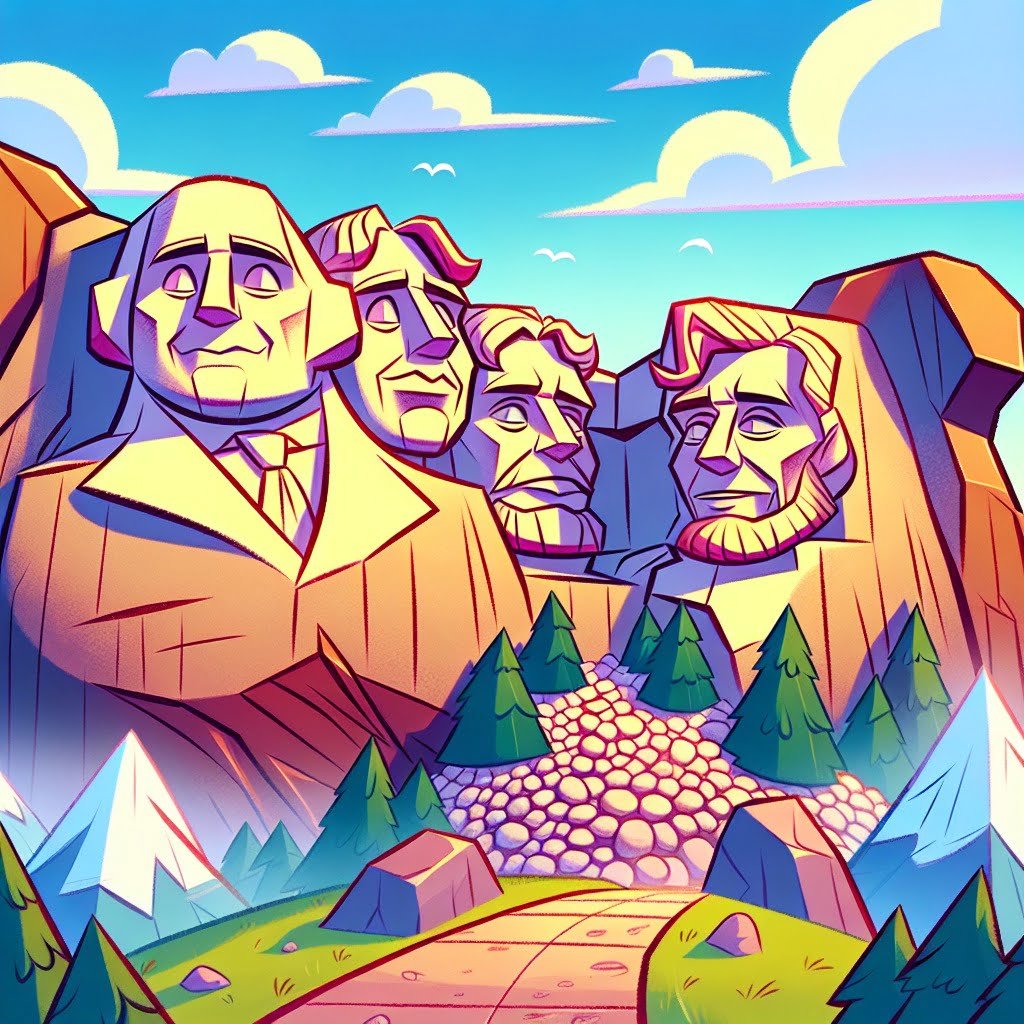
For younger kids: Mount Rushmore has giant carvings of 4 presidents’ faces!
For older kids: The massive sculptures of Presidents Washington, Jefferson, Roosevelt, and Lincoln at Mount Rushmore represent significant events and ideals in American history.
Detailed explanation:Mount Rushmore, located in the Black Hills of South Dakota, is a famous monument featuring the sculpted heads of four of America’s most beloved presidents: George Washington, Thomas Jefferson, Theodore Roosevelt, and Abraham Lincoln. The monument was created by sculptor Gutzon Borglum and his son Lincoln Borglum, and was completed in 1941.
One interesting aspect of Mount Rushmore is that the heads of the presidents are not sculpted to scale. In fact, each head is about 60 feet tall, which is equivalent to a six-story building. The idea behind this design was to make the monument more visually impressive, as well as to allow for more detail to be included in the sculptures.
Mount Rushmore is not only a symbol of American history and democracy, but it is also located within the boundaries of the Mount Rushmore National Memorial, which is a part of the National Parks System. This means that the monument is protected by the National Park Service, ensuring that it will be preserved for future generations to enjoy. Visitors to the park can learn more about the history of Mount Rushmore, as well as the process of creating the monument, through guided tours and educational programs.
Overall, Mount Rushmore’s Presidents are a vibrant reminder of America’s past and a testament to the creativity and skill of the artists who brought this iconic monument to life. For kids visiting the park, it is not only a fun and educational experience, but also a chance to learn about the importance of preserving our nation’s history and natural treasures. National Parks Facts For Kids are abundant at Mount Rushmore, making it a must-visit destination for families looking to explore the wonders of the United States.
National Parks Facts For Kids
4. The Giant Sequoias of Yosemite
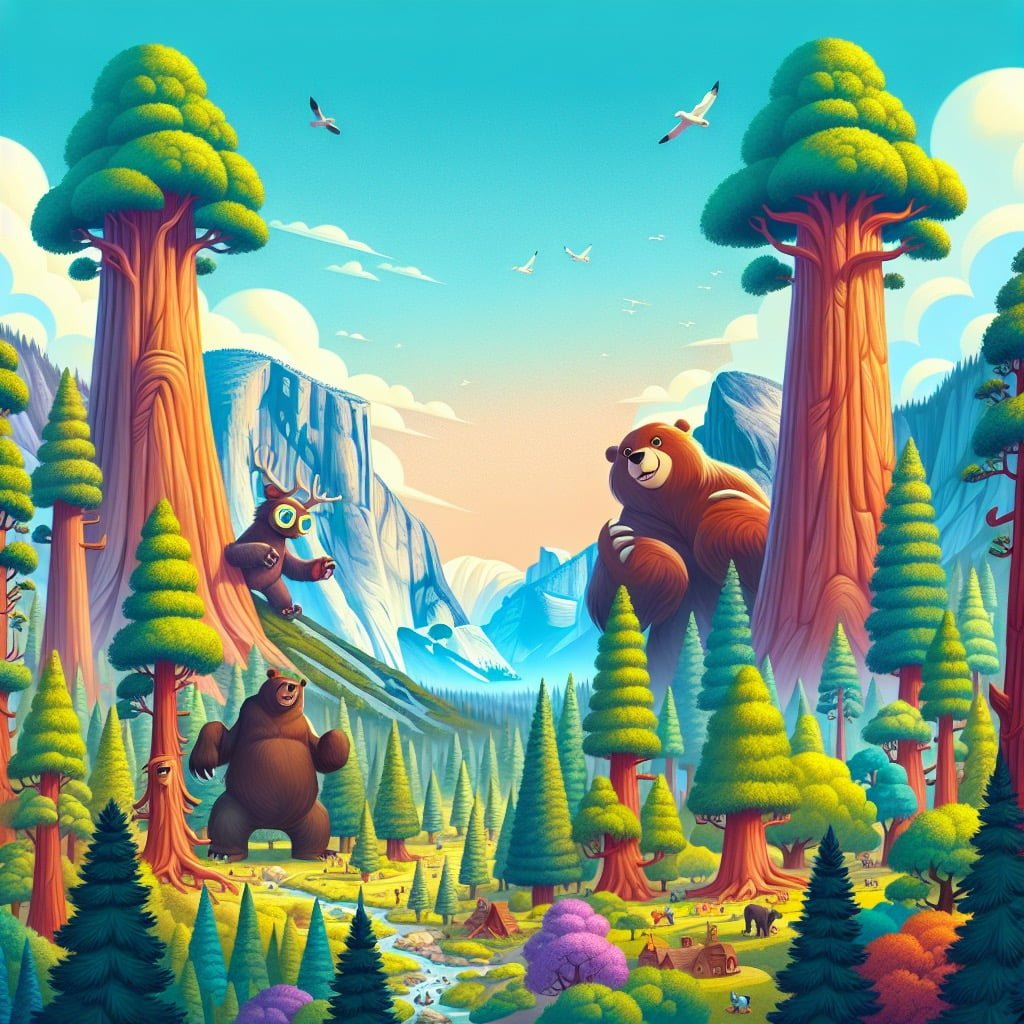
For younger kids: Yosemite has trees as big as skyscrapers!
For older kids: Yosemite’s giant sequoias are some of the largest and oldest living organisms on the planet, towering over 250 feet and with a lifespan of thousands of years.
Detailed explanation:One of the most awe-inspiring sights in the National Parks system is the Giant Sequoias of Yosemite. These incredible trees are among the largest and oldest living organisms on Earth, and they can be found in several groves throughout the park.
The Giant Sequoias are truly monumental in size, with some reaching heights of over 300 feet and diameters of up to 30 feet. These massive trees are able to grow to such incredible sizes due to their unique biology. One key factor is their thick, fire-resistant bark which helps protect them from wildfires that are common in their natural habitat. Additionally, their shallow root systems spread out over a wide area, allowing them to anchor themselves in the soil and support their immense size.
Visitors to Yosemite National Park are often amazed by the sheer size and majesty of these ancient trees. Standing at the base of a Giant Sequoia and looking up at its towering branches can be a truly humbling experience. Some of the most famous Giant Sequoias in the park include the Grizzly Giant and the Tunnel Tree, which was famously carved out in the 19th century to allow horse-drawn carriages to pass through.
Overall, the Giant Sequoias of Yosemite are a prime example of the incredible natural wonders that can be found in our National Parks system. These magnificent trees serve as a reminder of the importance of preserving our natural landscapes for future generations to enjoy. National Parks Facts For Kids are not only educational but also inspirational, encouraging young people to connect with nature and appreciate the beauty of the world around them.
National Parks Facts For Kids
5. Glacier National Park’s Melting Glaciers

For younger kids: The glaciers at Glacier National Park are disappearing!
For older kids: Due to climate change, the glaciers at Glacier National Park are rapidly melting, highlighting the urgent need to protect and preserve our natural environments for future generations.
Detailed explanation:Glacier National Park is home to over 700 miles of hiking trails, stunning alpine scenery, and of course, its iconic glaciers. However, due to the effects of climate change, these glaciers are rapidly melting. This phenomenon is not unique to Glacier National Park, as many national parks around the world are experiencing the same issue.
One of the main reasons for the melting glaciers in Glacier National Park is the overall increase in global temperatures. As temperatures rise, the glaciers are unable to accumulate the amount of snow and ice needed to maintain their size. In fact, some studies suggest that all the glaciers in the park could completely disappear by the year 2030.
The melting glaciers have significant impacts on the park’s ecosystem and surrounding areas. As the glaciers disappear, the water levels in the park’s lakes and rivers are affected. This, in turn, can disrupt the habitats of many plant and animal species that rely on these water sources for survival.
Additionally, the melting glaciers pose a threat to the park’s tourism industry. Many visitors come to Glacier National Park specifically to see the glaciers, so their disappearance could have negative economic consequences for the surrounding communities that depend on tourism.
In conclusion, the melting glaciers in Glacier National Park serve as a poignant reminder of the urgent need to address climate change. As we continue to see the effects of global warming on our planet’s most iconic landscapes, it is crucial that we take action to preserve these natural wonders for future generations to enjoy. National Parks Facts For Kids is an excellent resource for educating young people about the importance of protecting our environment and the wildlife that calls it home.
National Parks Facts For Kids
6. Denali National Park’s Tallest Mountain

For younger kids: Denali has the tallest mountain in North America!
For older kids: The iconic peak of Denali, also known as Mount McKinley, rises to an awe-inspiring height of 20,310 feet, making it the highest mountain in North America.
Detailed explanation:Denali National Park, located in Alaska, is home to the tallest mountain in North America, Denali. Formerly known as Mount McKinley, Denali reaches an impressive height of 20,310 feet above sea level. This iconic peak is a popular destination for climbers and outdoor enthusiasts, drawing visitors from around the world to test their skills and experience the breathtaking beauty of the Alaskan wilderness.
Denali National Park offers a variety of recreational opportunities for visitors, including hiking, camping, and wildlife viewing. The park is home to a diverse range of plant and animal species, including grizzly bears, moose, and Dall sheep. Visitors can explore the park’s vast wilderness on foot, by bike, or even on guided bus tours.
In addition to its natural beauty, Denali National Park also holds significant cultural and historical importance. The park is home to several archaeological sites that provide insight into the region’s indigenous peoples, as well as remnants of early settlers and gold miners. The park’s visitor center offers exhibits and educational programs that delve into the rich history of the area.
Overall, Denali National Park is a must-visit destination for outdoor enthusiasts and nature lovers alike. Its towering peak, diverse wildlife, and rich history make it a truly unique and unforgettable experience. For kids interested in National Parks Facts For Kids, Denali National Park is an educational and exciting destination to learn about the wonders of the natural world.
National Parks Facts For Kids
7. Arches National Park’s Natural Stone Arches

For younger kids: Arches National Park has rocks that form cool arches and shapes!
For older kids: Arches National Park is home to over 2,000 natural sandstone arches, including the famous Delicate Arch, creating a mesmerizing landscape of stone formations.
Detailed explanation:Arches National Park is home to a stunning collection of natural stone arches, making it a must-see destination for visitors of all ages. These arches are formed through a process known as erosion, where the natural forces of wind and water gradually wear away at the rock, creating these unique landforms over time.
One of the most famous arches in the park is Delicate Arch, which has become an iconic symbol of not only Arches National Park but also the state of Utah. This impressive arch stands at 52 feet tall and 32 feet wide, attracting photographers and nature enthusiasts from around the world. Another popular arch is Landscape Arch, which is one of the longest natural stone arches in the world at 290 feet long.
Exploring these natural stone arches is not only a visually stunning experience but also provides a great opportunity for kids to learn about the geological processes that shape our planet. By visiting National Parks like Arches, children can gain a greater appreciation for the natural world and the importance of preserving these unique landscapes for future generations.
In addition to the natural stone arches, Arches National Park also features a variety of other geological formations, including towering pinnacles, slickrock domes, and balanced rocks. These features provide a hands-on way for kids to learn about geology and the forces that shape the Earth’s surface.
Overall, National Parks like Arches offer a valuable opportunity for kids to learn about the natural world in a fun and engaging way. By exploring these unique landscapes, children can develop a deeper understanding of geology and the importance of conservation efforts to protect our planet’s natural treasures. National Parks Facts For Kids are not only educational but also inspire a sense of wonder and awe in young visitors.
National Parks Facts For Kids
8. The Everglades’ Unique Ecosystem
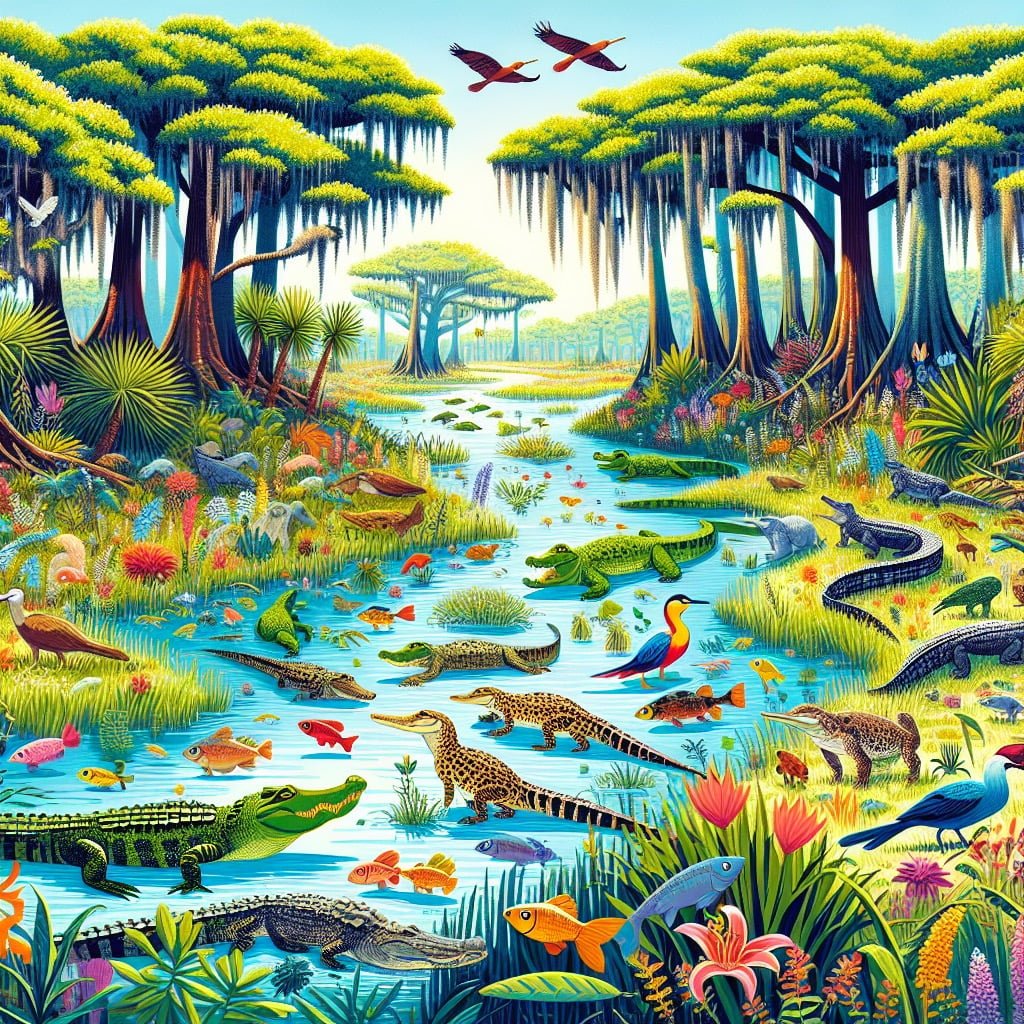
For younger kids: The Everglades has lots of alligators and wading birds!
For older kids: The Everglades is the largest tropical wilderness of any kind in the U.S. and is home to a diverse array of wildlife, including alligators, panthers, and manatees.
Detailed explanation:One of the most fascinating and diverse ecosystems in the world can be found in the Everglades National Park in Florida. This vast wetland is home to a wide variety of plants and animals, many of which are found nowhere else on Earth. The Everglades is often referred to as a “river of grass” due to the slow-moving water that flows through the marshes and sawgrass prairies.
One of the most unique features of the Everglades is its intricate food web, which is crucial for the survival of the many different species that call this national park home. From tiny insects to large predators like alligators and panthers, each organism plays a vital role in maintaining the balance of this fragile ecosystem.
The Everglades also serves as an important habitat for various species of birds, including wading birds like herons and egrets, as well as migratory birds that pass through the area during different times of the year. In fact, over 360 species of birds have been recorded in the park, making it a paradise for birdwatchers.
One of the biggest threats to the Everglades’ unique ecosystem is human development and activities such as drainage and pollution. Efforts are being made to protect and restore this national park, including initiatives to restore natural water flow and control invasive species.
Overall, the Everglades National Park stands as a shining example of the importance of preserving and protecting our natural landscapes. Through education and conservation efforts, we can ensure that this unique ecosystem continues to thrive for generations to come, providing a haven for both wildlife and visitors alike. National Parks Facts For Kids are essential in understanding the significance of these protected areas and inspiring future generations to appreciate and protect our natural world.
National Parks Facts For Kids
9. The Underground Caverns of Carlsbad Caverns National Park
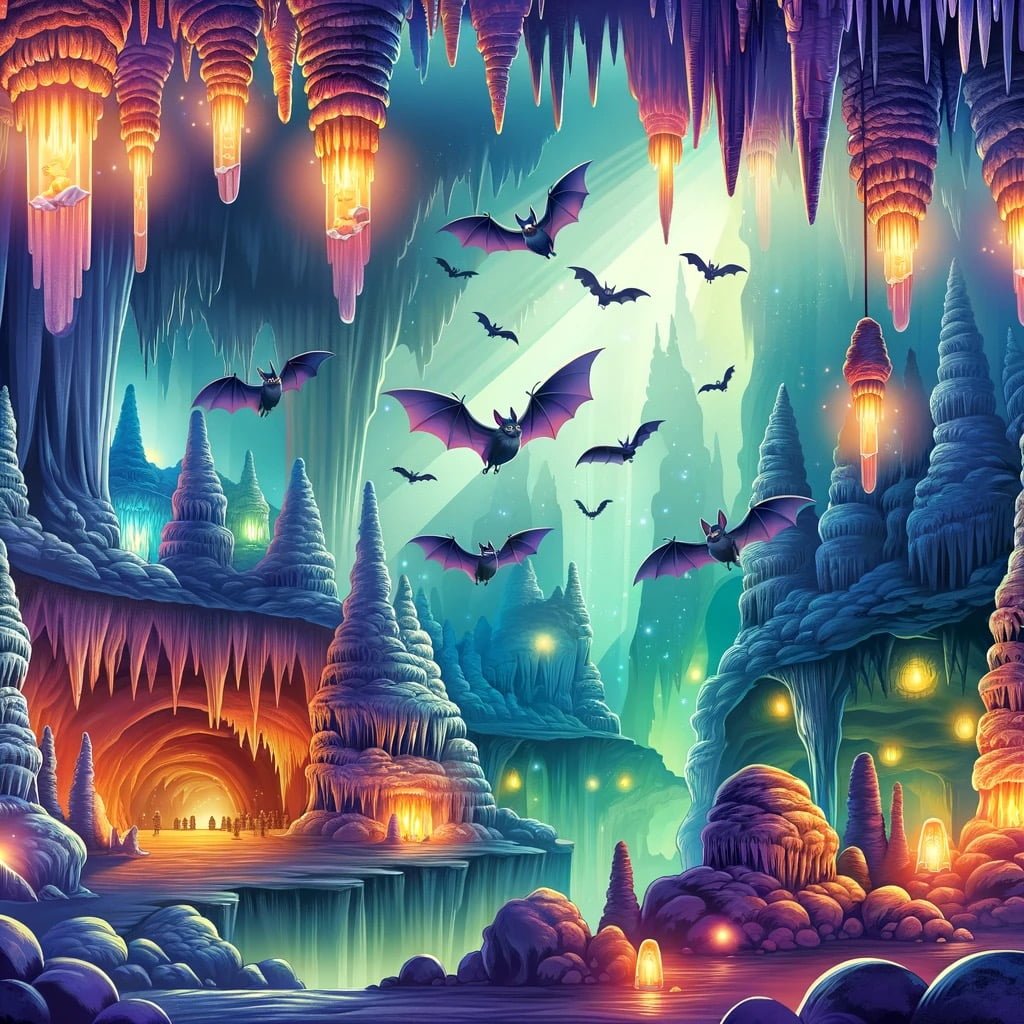
For younger kids: Carlsbad Caverns has caves with bats and glowing rocks!
For older kids: Carlsbad Caverns National Park houses more than 100 caves, including the Big Room, which is the largest known natural limestone chamber in the Western Hemisphere.
Detailed explanation:Carlsbad Caverns National Park, located in New Mexico, is home to one of the most breathtaking natural wonders in the United States – the underground caverns. These caverns were formed over millions of years by sulfuric acid dissolving the limestone in the region, creating a series of stunning caves and rock formations.
As one of the most popular National Parks Facts For Kids, Carlsbad Caverns offers an unparalleled opportunity for young visitors to learn about geology and natural history in a hands-on way. Guided tours through the caverns allow children to explore the unique underground environment and marvel at the intricate stalactites and stalagmites that adorn the cave walls.
One of the main attractions in the park is the Big Room, which is the largest natural limestone chamber in North America. Spanning over 14 football fields in size, this massive underground space is a testament to the power of nature and the geological forces at work beneath the Earth’s surface.
Visitors to Carlsbad Caverns National Park can also witness the daily flight of thousands of bats as they exit the cave at dusk in search of food. This natural spectacle is a favorite among children, who are fascinated by the sight of these nocturnal creatures taking to the sky.
Overall, Carlsbad Caverns National Park offers a unique and educational experience for young visitors, making it one of the most captivating National Parks Facts For Kids. From the underground caves to the diverse wildlife that calls the park home, there is no shortage of wonders to discover in this remarkable natural treasure.
National Parks Facts For Kids
10. Hawaii Volcanoes National Park’s Fiery Geology
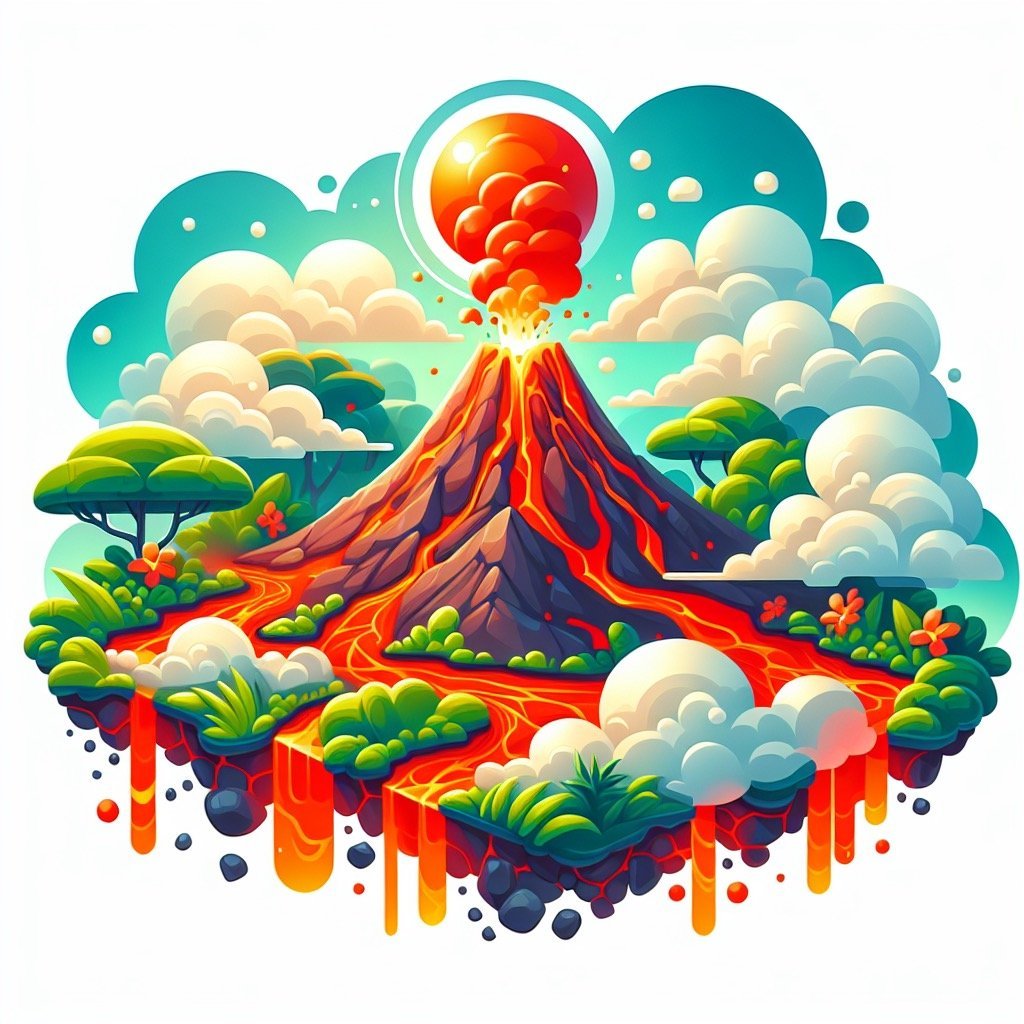
For younger kids: Hawaii Volcanoes has volcanoes that make new land!
For older kids: Hawaii Volcanoes National Park showcases the incredible power of volcanic activity, with the ongoing eruption of Kīlauea constantly shaping and renewing the landscape of the island.
Detailed explanation:Hawaii Volcanoes National Park is a fascinating destination boasting fiery geology that captivates visitors of all ages. This park, situated on the Big Island of Hawaii, showcases the powerful forces of nature at work through its two active volcanoes, Kilauea and Mauna Loa. These volcanoes have been erupting for thousands of years, shaping the unique landscape of the park.
One of the most notable attractions in Hawaii Volcanoes National Park is the Kilauea Caldera, a massive crater that constantly spews out lava, creating a fiery spectacle that is both awe-inspiring and terrifying. Visitors can witness this incredible display of nature’s power from the safety of designated viewing areas, where they can see molten lava flowing into the sea or glowing red hot in the dark of night.
In addition to the active volcanoes, the park is home to a diverse range of ecosystems, from lush rainforests to barren lava fields. Visitors can explore miles of hiking trails that lead through ancient lava tubes, past steam vents, and into lush rainforests filled with native birds and plants. The park also offers educational programs for kids, teaching them about the geology, flora, and fauna of this unique environment.
Overall, Hawaii Volcanoes National Park is a must-visit destination for families looking to learn about the fiery geology of the Hawaiian Islands. With its active volcanoes, diverse ecosystems, and educational programs, this park offers a truly unforgettable experience for visitors of all ages. National Parks Facts For Kids are abundant in this incredible park, making it a perfect destination for families seeking adventure and learning in one of the most geologically active places on earth.
Did You Know?
National Parks Adventure is an IMAX film that takes viewers on a breathtaking journey to some of the nation’s most beautiful natural parks, inspiring a new generation of park enthusiasts.
Summary of National Parks Facts For Kids
Embark on a thrilling journey through the fascinating world of National Parks with our latest blog post, “National Parks Facts For Kids”. Packed with intriguing tidbits and educational insights, this post is sure to captivate young minds and inspire a newfound love for the great outdoors. Discover how Yellowstone National Park made history as the world’s first national park, or uncover the secrets of the most visited national park in the U.S., Great Smoky Mountains National Park.
But the adventure doesn’t stop there! Dive into the diverse ecosystems of National Parks, from towering sequoias to vibrant coral reefs, and ignite a sense of wonder and appreciation for the natural world. Learn about the conservation efforts and environmental stewardship initiatives happening within these parks, and discover how you can make a difference in protecting our planet.
By delving into the fun facts and educational resources about National Parks, children can develop a deeper connection to nature and cultivate a sense of responsibility towards preserving it for future generations. Join us on this unforgettable journey and unlock a world of knowledge and awe-inspiring beauty that awaits in our National Parks.
Sources and additional information for National Parks Facts For Kids
WikipediaBritannicaEnvironmental Protection Agency (EPA)National Oceanic and Atmospheric Administration (NOAA)The Nature ConservancyWorld Wildlife FundEarth Day NetworkGreenpeace InternationalJane Goodall InstituteEnvironmental Protection Agency (EPA)World Wildlife Fund – ConservationNature ConservancyGreenpeaceUnited Nations Environment Programme (UNEP)Conservation InternationalEarthwatch InstituteEnvironmental Defense FundSierra Club

